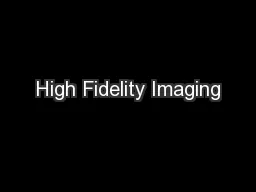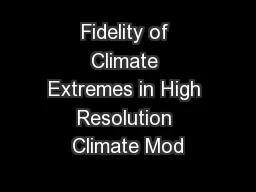PPT-High Fidelity Imaging
Author : calandra-battersby | Published Date : 2016-08-09
Rick Perley NRAOSocorro 2 1 What is High Fidelity Imaging Getting the Correct Image limited only by noise The best dynamic ranges brightness contrast exceed
Presentation Embed Code
Download Presentation
Download Presentation The PPT/PDF document "High Fidelity Imaging" is the property of its rightful owner. Permission is granted to download and print the materials on this website for personal, non-commercial use only, and to display it on your personal computer provided you do not modify the materials and that you retain all copyright notices contained in the materials. By downloading content from our website, you accept the terms of this agreement.
High Fidelity Imaging: Transcript
Download Rules Of Document
"High Fidelity Imaging"The content belongs to its owner. You may download and print it for personal use, without modification, and keep all copyright notices. By downloading, you agree to these terms.
Related Documents














